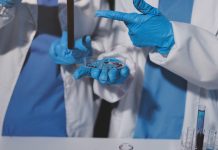Fireworks provide that spectacular climax to many celebrations, be it religious, national days or sporting events. And it warms the cockles of many a heart. However, at the same time it releases noxious pollutants into the air, land and water. Recently, for this reason, the Supreme Court ruled against its sale in Delhi and NCR. In India too, like in other countries there is increasing awareness and activism against pollution due to the deleterious consequences of pollution on human health and the environment.
The solution lies in developing alternatives that are benign to the environment and living beings. Such shifts to greener alternatives have taken place in other segments of the chemical industry and in fireworks too, R&D for creating greener fireworks is taking place.
Trust chemistry to solve legacy issues.
No other application in the field of chemistry has such a positive association for the general population as fireworks” – Thomas Klapötke, University of Munich.
Display of fireworks elicits joy and awe among old and young. It cuts across every barrier of caste, colour, creed, race, religion and gender. Be it Deepavali in India, New Year in China, 4th of July in USA, or myriad sporting and religious festivals, fireworks are a spectacular metaphor to herald the new with pomp and grandeur. But like all good things of life, fireworks too come with a flip side. They spew out a cocktail of toxins into our environment, polluting our air, land and water. Only some of these deleterious effects manifest themselves immediately by choking our breath and watering our eyes. Other effects are silent, insidious and long-lasting.
Fireworks have taken the centerstage this Deepavali for the wrong reason, following the Supreme Court decision to ban their sale in Delhi and NCR. Some other states also followed suit. The ban was welcomed by many, especially those vulnerable to respiratory problems. But others saw this as an infringement on the traditional way of celebrating our festivals. The debate rages on social media. But on the day after Deepavali, as I write this, the reports are that Delhi’s air quality was not so different from previous years. So, while the ban may not have worked, it has definitely raised our awareness of a burning problem.
We have a hoary tradition of fireworks, dating back to the medieval period. Ancient kingdoms like Vijaynagara had master pyrotechnicians, whose skills have been recorded by historians. Competitive fireworks are the rule in temple festivals of Kerala, which resulted in the Puttingal tragedy last April killing 111 people. The modern fireworks industry in our country is more than 100 years old and is the second largest in the world with an annual turnover of `7000 crores and providing direct employment to more than 3 lakh people. Another 5 lakh people benefit indirectly through printing, packaging, distribution etc. These are not numbers to be trifled with.
DDT was the most popular insecticide to counter mosquitoes, but it was banned in early 70s, when evidence of its harmful effects on human population started mounting. Pesticide industry quickly introduced Pyrethroids, the mainstay of formulations today. Instead of banning pesticides, a harmful constituent was replaced by a benign one. Chemical industry is replete with such examples of green substitutes. Alternatives to TEL and DOP, for example. Benign substitutes are also available in fireworks industry.
The big initiative for this has come from US military. Militaries use flares for illumination and simulating battlefield explosion. The constituents of flare are very similar to that of fireworks. Flares used during military training leave behind toxic residues in civilian areas and US military spends a considerable amount of money in clean-up operations.
Major constituents of a firecracker are: fuel, oxidiser, ingredients to impart colour and special effects to the display and finally the binder. Once upon a time the oxidiser of choice was Potassium Chlorate, the chemical on the head of a matchstick, but now banned from use in fireworks because of its sensitivity to friction. But it continues to be illegally used because it is powerful and inexpensive. The Puttingal temple tragedy has been attributed to potassium chlorate. Perchlorates of potassium and ammonium are the widely used oxidizers today. But perchlorates are toxic to the human body, impairing the functioning of thyroid gland by interfering with Iodine absorption. Perchlorate contamination of the environment after July 4th celebrations in USA has been widely studied and have raised alarms. Perchlorate levels in water reportedly increase 1000 times after 4th July and it takes up to 90 days for the situation to reach normal. US military had similar experience after carrying out exercises. With authorities imposing stringent limits on allowable perchlorates in potable water, the military had to seek cleaner alternatives or fork out money for cleaning up sites. The quest turned up nitrogen rich cyclic compounds – Tetrazoles and Tetrazines.
Tetrazoles are synthetic heterocyclic compounds having a 5-member ring of four nitrogen atoms and one carbon atom. Tetrazines have 6-member ring with four Nitrogen atoms and two carbon atoms. The main feature of these molecules is their high heat of formation. Di-hydrazinotetrazine (DHT) has a heat of formation of 900 kcal/ kg. Though not releasing oxygen like perchlorates, they do release a large amount of energy when they break down. This kickstarts the combustion process. Also, the combustion product is not carbon dioxide but Nitrogen. Perchlorate free fireworks are a reality, powered by tetrazoles and tetrazines.
Perchlorates are not the only toxic fallout of firecrackers. The colour and special effects of fireworks are contributed by different metals. For example, green is due to barium, blue due to copper, red due to strontium etc. These metals are packed into the firecracker as a salt, usually chlorides or nitrates. While the cations – Ba, Cu, Sr etc contribute to the colour, the anions – chloride, carbonate, nitrate etc influence the flame temperature and hence the brightness and brilliance. Blue light, widely regarded as the most attractive, is also the most difficult to generate in pyrotechnics, since the copper compounds have to be heated to a specific temperature for the optimal shade of blue.
There is more to the chemistry of fireworks than what meets the eye. The colours formed when chlorine combines with various elements were first observed by Chertier in 1836. The blue of copper is not due to cuprous chloride, but cupric monochloride, an unstable molecule that exists only inside the flame. When potassium chlorate was substituted as the oxidiser, a supplemental source of chlorine was introduced into the firecracker. One cheap source is PVC. PVC combustion leads to formation of dioxins and other toxic compounds. So, elimination of chlorine is another important target in the development of “Green Fireworks”. Tests with copper iodide and copper bromide have yielded surprisingly good results. Chlorine-free formulations for emitting blue light are now available, but its widespread adoption is still some years away. Similar benign formulations are under development and trial for other colours too.
Much of today’s research and development of environment friendly fireworks is funded and spearheaded by US and is directed towards military applications. The fallout into civilian domain will take time. Cost will be a serious barrier. Indian fireworks industry has close links with Indian Army and has its own R&D centre in Sivakasi, Tamilnadu. A similar collaboration is thus possible in our country. Through development of “Green Fireworks”, chemistry, considered as the Mother Science, continues to enhance the quality of our lives. From a professional perspective, it is very satisfying to know that Chemical Industry has solutions to the problem of its own creation.
Readers’ responses may be sent to k.sahasranaman@gmail.com or chemindigest@gmail.com

































